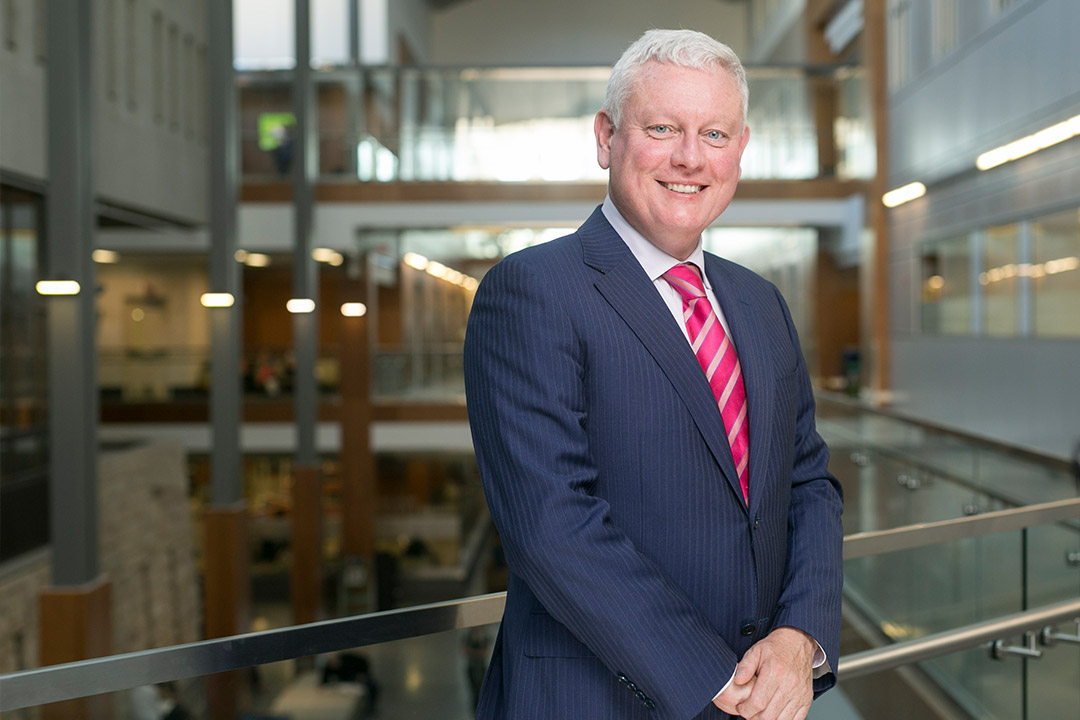
From epidemics to Olympics
Hearing Steven Jones describe his time working with highly contagious deadly diseases, it almost sounds like he’s walking you through a scene from a blockbuster film.
By HenryTye GlazebrookHe’ll recount the measures to prevent contamination—the security checkpoints, the multiple changes of clothes, the biosafety suits and the chemical showers, just to name a few—each of which was a regular part of simply showing up for his job of managing Canada’s only Level 4 microbiological lab, and it’s suddenly very easy to wonder how anyone could willfully walk through those doors.
But for Jones, the process was just another way of holding on to a keen sense of perspective on the nature of his work.
“You treat these viral agents with the utmost respect, because they don’t give you a second chance,” Jones said. “If you make a mistake—particularly if it’s a needle stick or a sharps mistake—there is a very significant chance, particularly with something like Ebola, that the consequences would be fatal. The first ever outbreak in 1976 of Ebola, there were in excess of 80 needle stick injuries and all of those people died. That gives it some level of context.”
Jones is relatively new to the University of Saskatchewan, having just started his new roles as executive director and professor at the School of Public Health on Sept. 1, but his experience in the field stretches back decades.
Included in his career have been stints working with Health Canada during the SARS epidemic of 2003, researching international disease outbreaks with the World Health Organization and leading biological security operations in Vancouver during the G8 and G20 summits as well as the 2010 Olympic Games.
“You’re part of a big machine, and you work with a lot of highly skilled, dedicated people,” Jones said of his Olympic experience. “The goal, of course, was to be on the ground preventing, by our pure presence, any incidents from developing into a crisis by doing very rapid response. If the police found a suspicious package at a venue, we could do on-site analysis and tell them that there was no biologic threat.”
Despite his previous globe-spanning work, Jones said settling in Saskatoon and moving to the U of S was the right choice. He said the decision was easy, because of his enthusiasm to help train the next generation of public health researchers and his desire to help the institution move the field further forward, and also because he is a big proponent of the university’s vision.
“I like the University of Saskatchewan,” Jones said. “My own daughter was a student here in the Western College of Veterinary Medicine. I like the campus, I like the Indigenization and reconciliation emphasis which permeates the entire place, and I like the opportunity to come into what is already a going concern in the School of Public Health and take it, hopefully, to the next level and beyond—to have real impact, not just on the lives of our students but also on the lives of people in Saskatchewan and globally.”
Now that he’s feeling settled into his new role, Jones said he’s excited to start building for the future.
The first steps, he said, include securing the school’s foundational elements as it heads into its next cycle of accreditation, creating interdisciplinary opportunities with other areas of the university and connecting with the surrounding community to discover what their public health needs are. But in all cases, Jones said the overarching goal of his career, past and future, involves striving for a healthier tomorrow.
“Because we live longer and our lifestyles have changed so much, we’re much more susceptible to these chronic diseases that kill people—cardiovascular disease, diabetes and so on,” he said. “The need for public health expertise is not going to diminish in the future. In fact, it will probably increase.”
HenryTye Glazebrook is a freelance writer and former U of S communications co-ordinator.

